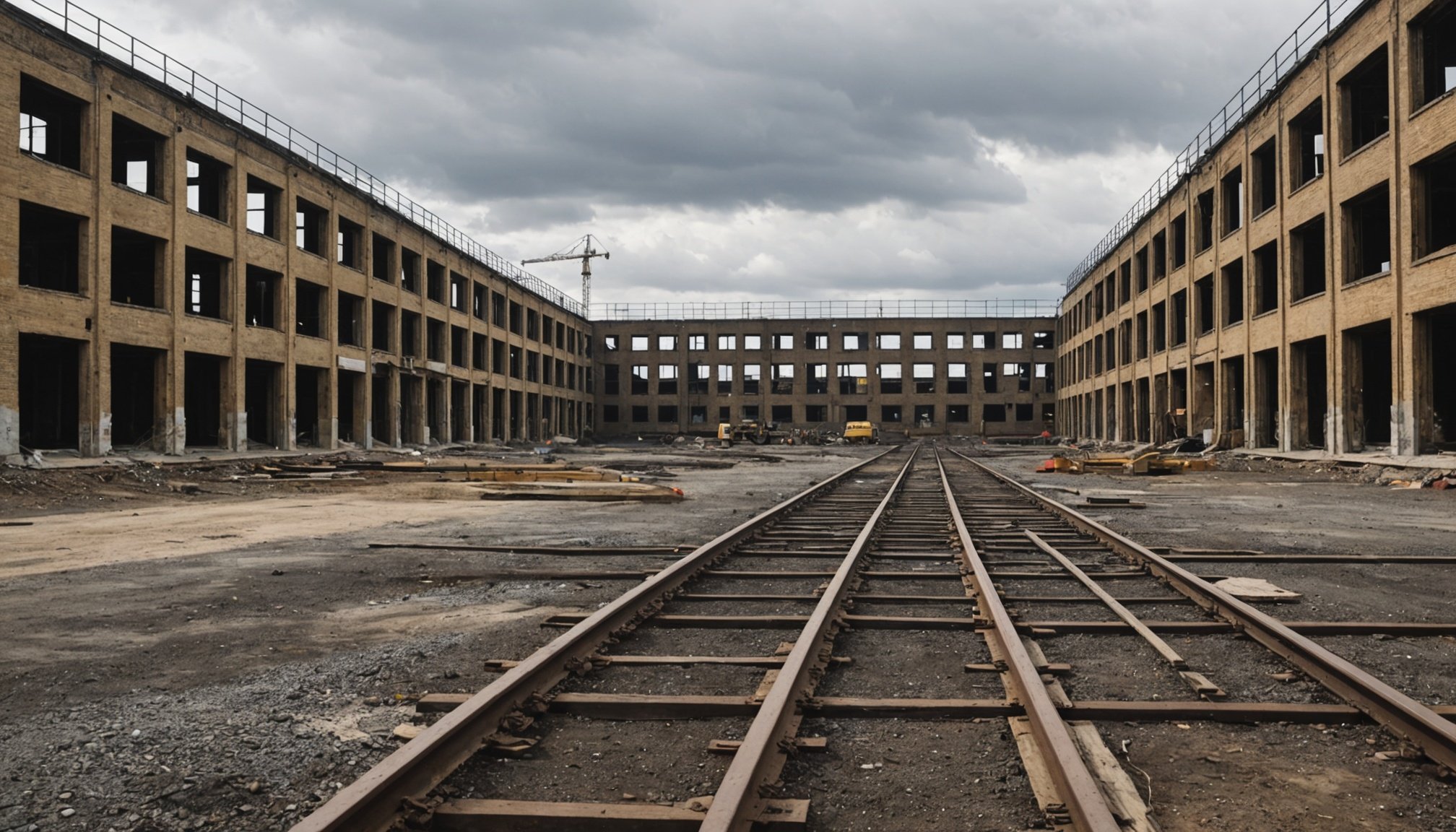Understanding Brownfield Development Challenges
Brownfield development refers to the revitalisation of previously used land, often tainted with pollutants or hazardous substances. Such sites, known as brownfield properties, are characterised by their potential environmental challenges and complex regulatory issues. Developers often face difficulties in land acquisition due to contamination concerns and zoning restrictions.
Environmental challenges frequently encountered in these projects include soil and water contamination, requiring meticulous assessment and remediation before any development can commence. Developers must adhere to strict guidelines to ensure environmental compliance and safety.
Also read : Unleashing innovative tactics to reduce water use in uk households
Regulatory frameworks play a crucial role. These include zoning regulations, environmental laws, and safety standards that must be navigated carefully. Compliance is not just about following laws; it involves coordinating with local authorities, understanding regulations, and implementing strategies to meet legal requirements.
Addressing these issues demands careful planning and cooperation between developers, environmental experts, and regulatory bodies. By understanding the properties and challenges involved in brownfield development, stakeholders can work together effectively to transform these areas into safe, productive assets for their communities. This process requires balancing redevelopment goals with environmental responsibility and regulatory adherence.
Environmental Obstacles in Brownfield Redevelopment
Brownfield sites are often plagued by various forms of site contamination, which necessitates thorough investigation. Common contaminants might include heavy metals, asbestos, lead, and hydrocarbons, all of which pose significant risks to both human health and the environment. Effective remediation strategies are crucial for mitigating these issues.
Remediation can take many forms, from on-site treatment of contaminated soil to more elaborate methods like bioremediation, which uses microorganisms to neutralise harmful substances. In some cases, removal and safe disposal of the contaminated materials might be necessary. The goal is to ensure that the site is safe for future use, complying with environmental standards.
Before any of this work can begin, an environmental assessment is paramount. This assessment evaluates the severity and extent of contamination, forming the backbone of any effective remediation plan. It typically involves rigorous sampling and analysis to pinpoint the exact nature and scope of the pollutants present.
These processes are not only about ensuring environmental compliance but also about paving the way for successful redevelopment. By proactively managing the environmental challenges of brownfield redevelopment, developers can create spaces that are both safe and economically viable.
Navigating Regulatory Hurdles
Understanding the complexities of zoning regulations is essential for successful brownfield development. These rules dictate how land can be used, significantly influencing project scope and design. They vary widely by location, necessitating thorough research to align plans with specific local requirements.
Local government policies play a vital role in guiding brownfield projects. These policies may offer support through technical assistance or incentives. However, navigating them often requires engagement with multiple agencies, each with its own set of criteria and expectations.
Ensuring compliance with regulatory requirements involves several steps. Initially, gaining a comprehensive understanding of applicable laws and guidelines is central. Developers often secure the services of legal experts familiar with environmental and land use regulations to streamline the process. Adhering to these regulations not only ensures project legitimacy but also reduces the risk of costly legal disputes and project delays.
To further simplify compliance, maintaining open communication channels with local authorities is beneficial. Regular updates and consultations can help address unforeseen challenges swiftly. Ultimately, viewing regulatory frameworks as frameworks for collaboration, rather than obstacles, can transform them into pathways for smoother, more streamlined projects with well-defined objectives.
Financial Challenges and Solutions
When tackling brownfield redevelopment, one primary hurdle is securing adequate funding sources. Given the complexities and risks, traditional financing might be elusive. Developers can explore various avenues such as government grants, private investments, and loans tailored to brownfield projects. Identifying the right mix of resources ensures project viability and progress.
Financial incentives play a crucial role in stimulating investment. Governments often provide tax incentives or rebates to motivate developers and investors. These incentives can significantly reduce initial financial burdens, making projects more attractive. Understanding available incentives can be as vital as the development itself.
Crafting robust investment strategies is essential to mitigate financial risks. Assessing potential returns, risks, and long-term benefits aids in making informed decisions. For example, phased development allows for gradual financial commitment, aligning expenses with realised returns. This approach can provide flexibility, accommodating unexpected challenges without jeopardising overall viability.
Moreover, partnerships with experienced stakeholders can provide financial insights and reduce uncertainties. Engaging with those familiar with successful brownfield projects benefits budgeting and investment decisions. Balancing ambition with fiscal responsibility fosters sustainable growth in brownfield redevelopment projects. Initiatives with solid financial foundations are more likely to achieve long-term success and community impact.
Community Engagement and Support
Engaging stakeholders in brownfield redevelopment is vital for aligning project goals with community needs. Effective involvement processes include organising public forums and workshops to gather input and build consensus. By integrating diverse perspectives, developers can foster a sense of ownership and collaboration.
Addressing community perceptions requires transparency and communication. Clear information on project benefits, environmental safeguards, and long-term impacts builds trust. Regular updates can dispel misunderstandings and create a positive outlook. Integrating community desires into planning not only enhances acceptance but also ensures that developments meet real needs.
Public outreach is instrumental in gaining support and facilitating successful redevelopment. Utilising diverse communication channels, such as social media, newsletters, and local events, broadens engagement. These avenues provide opportunities for ongoing dialogue, addressing concerns promptly and fostering relationship building. Additionally, showcasing examples of similar successful projects can illustrate potential community benefits.
By prioritising stakeholder involvement, addressing community perceptions, and employing effective outreach techniques, developers enhance public support. This harmonious relationship is essential for sustainable and productive brownfield projects, ensuring that developments positively influence their surroundings. As a result, revitalisation efforts can transform brownfield areas into vibrant community assets, improving quality of life and environment.
Case Studies in Successful Brownfield Redevelopment
Exploring success stories in brownfield redevelopment provides insights into overcoming obstacles and adopting best practices. One notable project transformed an industrial wasteland into a vibrant mixed-use destination, showcasing the power of strategic partnerships and environmental commitment.
Incorporating lessons from these endeavors is crucial. Key lessons learned often revolve around early stakeholder engagement, ensuring community support and collaborative planning. Effective communication not only aligns goals but also mitigates potential opposition. Projects thriving on strong public-private partnerships exemplify the benefits of shared expertise and resources.
The integration of robust investment strategies is another critical factor. Successful initiatives often leverage diverse funding sources, reducing reliance on traditional financing and maximising available financial incentives. This variety helps in managing financial risk, offering flexibility in dynamic project phases.
Evident from these case studies is the importance of enduring dedication to environmental standards. Comprehensive remediation strategies and ongoing environmental assessments ensure sustainable outcomes, meeting rigorous compliance requirements.
By looking at these triumphs, developers gain valuable insights into managing environmental challenges and navigating complex regulatory frameworks. Initiatives demonstrating resilience and adaptive learning set benchmarks for similar projects, optimising returns and community enhancements.











